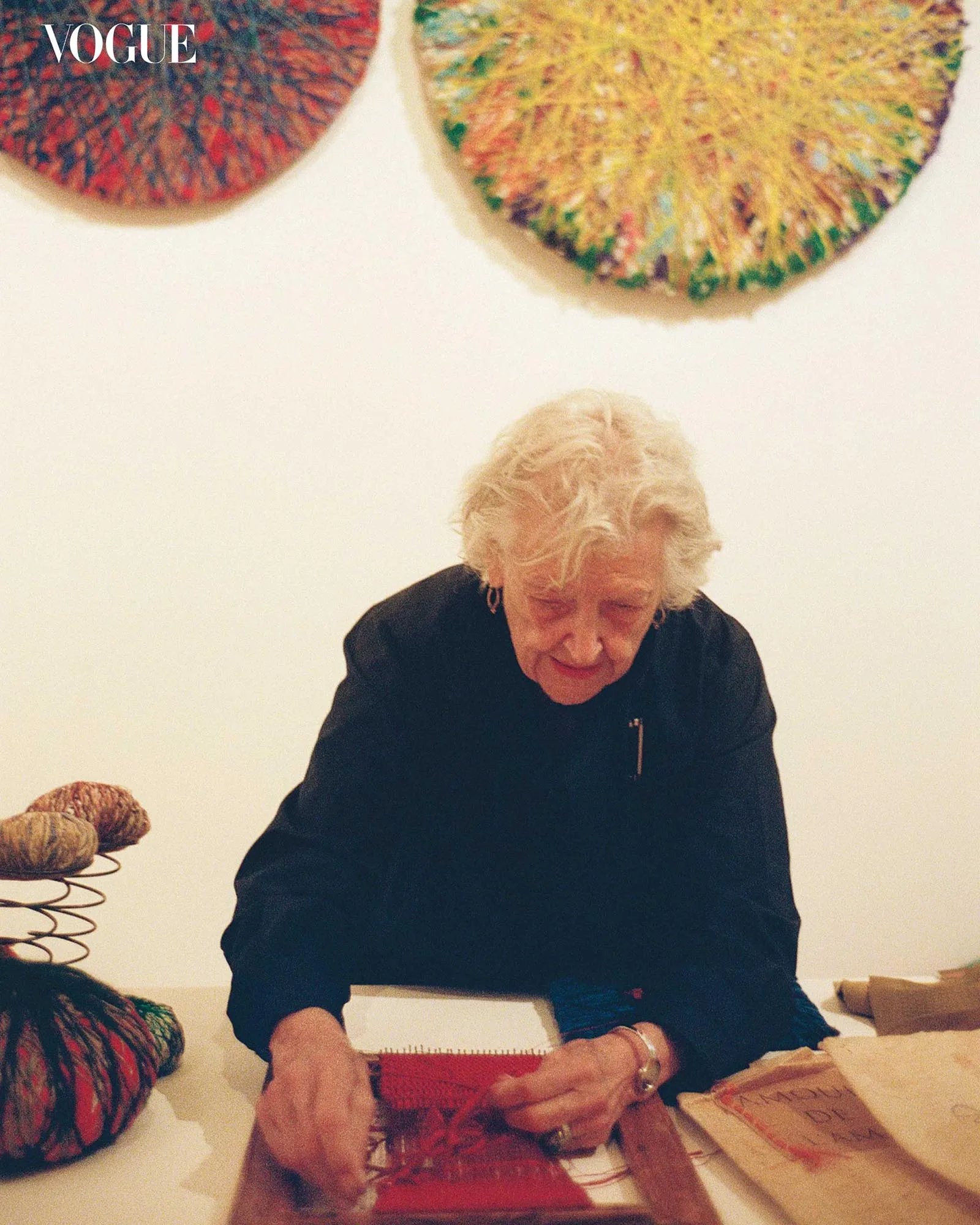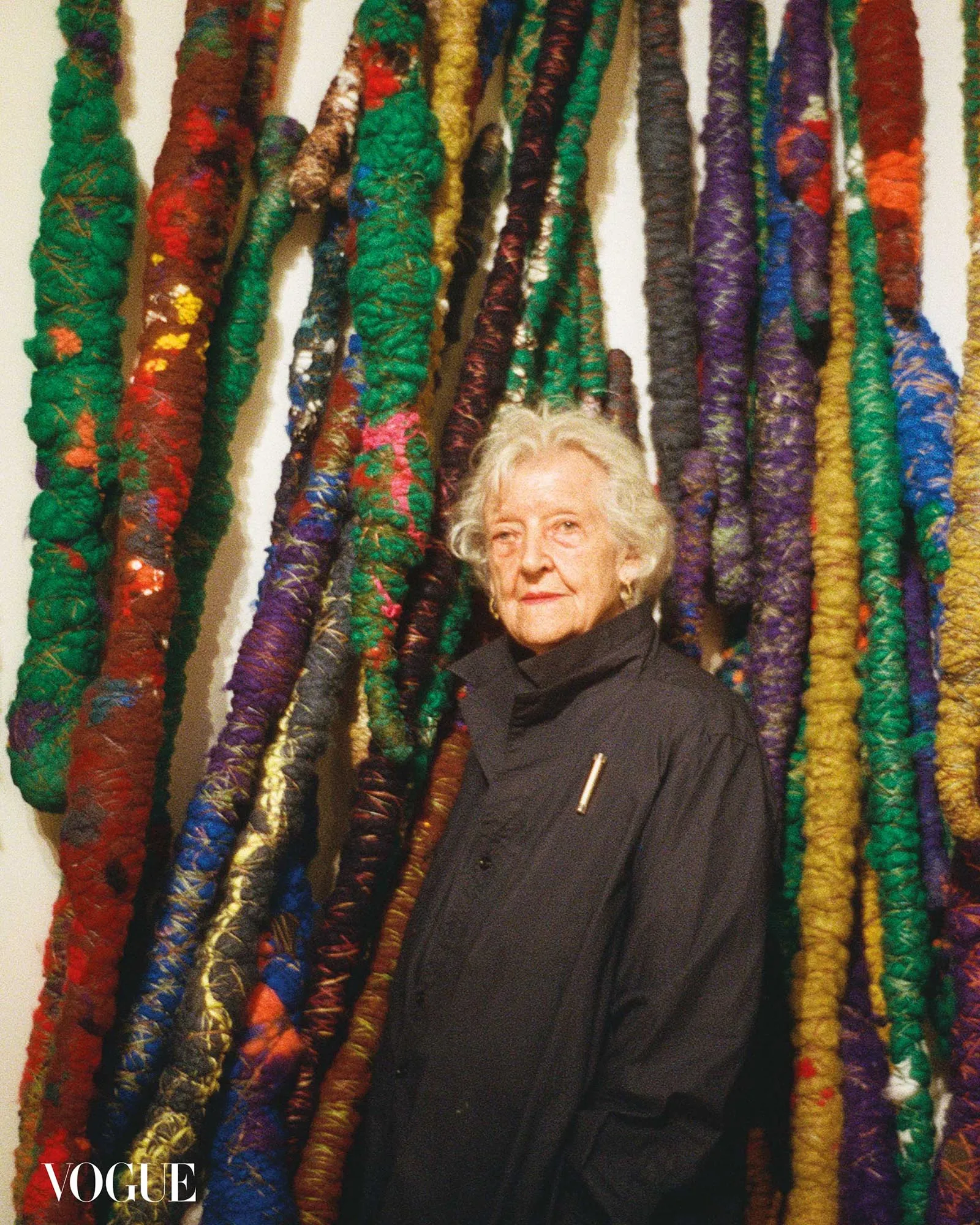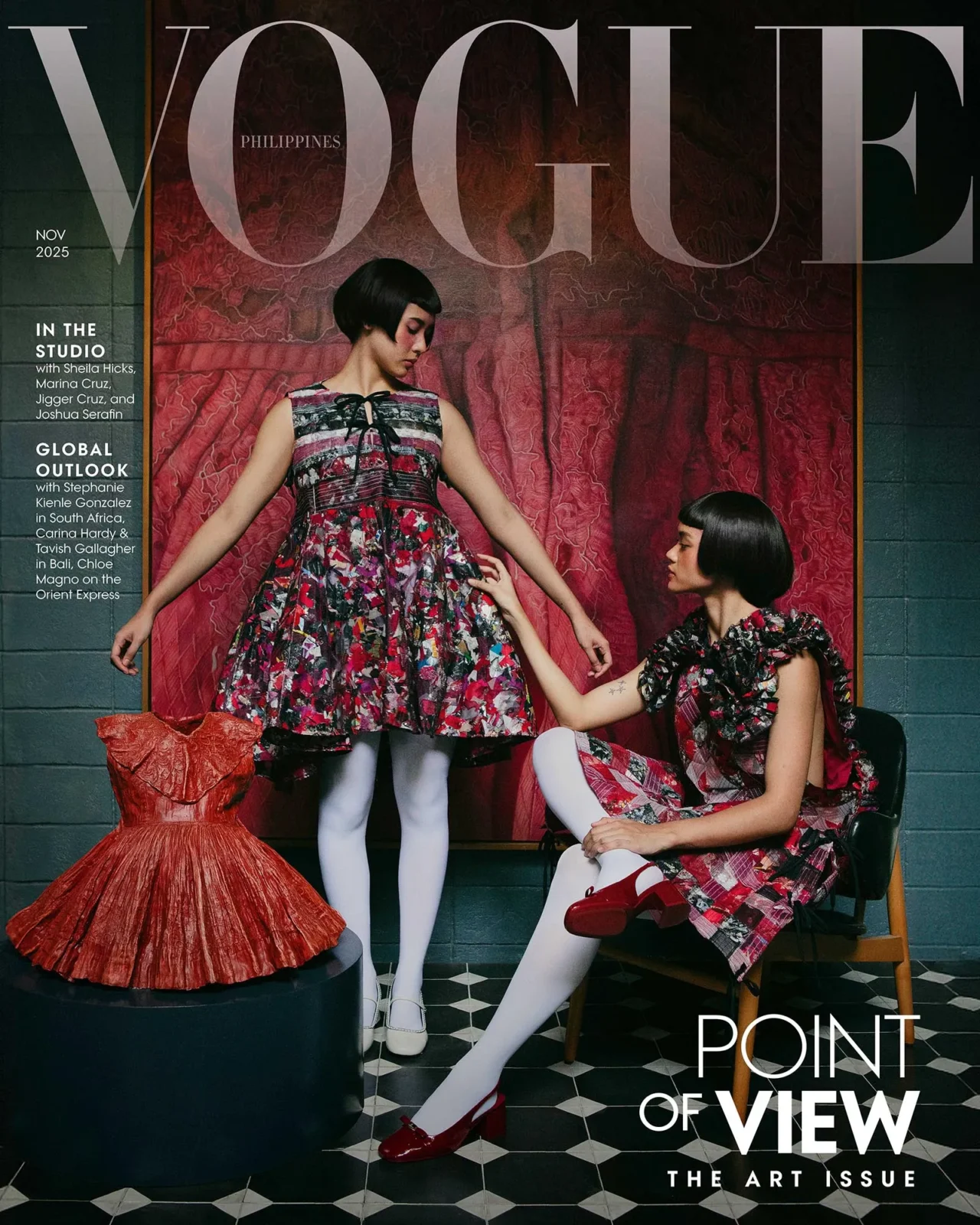A pioneer for textile art, Sheila has been exploring the expressive potential of fiber for over six decades, blending craft traditions with modernist abstraction. Photographed by Louis Boudart and Louise Zanartu
Having lived a life surrounded by textiles and tactility, Sheila Hicks has always led with curiosity and confidence.
“Have you heard of the flying carpet?” Sheila Hicks asks midway through our conversation. “In children’s stories, they always talk as though there’s a flying carpet and someone’s sitting on it.”
After a false start and mixed messages throughout that day, we finally had Hicks on Zoom. It had been a little more than a week since she flew back to Paris from San Francisco. She traveled in early August for her exhibition at SFMOMA, New Work : Sheila Hicks.
Her question harked back to another kind of flight, more than 50 years ago, when jumbo jets first ruled the skies.
“When Air France inaugurated their 747s, I made the first flying tapestry inside the plane,” Sheila says. “A big, very big, one. One of the prototypes is now in the collection of the Museum of Modern Art in New York.”

She continues: “Air France ordered one, and then they ordered four, and then they ordered four more, and then they ordered four more. Finally, we got the help of the Carmelite convent in Boulogne, here in Paris, to help us. So the Carmelite nuns, who work and live in silence, we asked if they would help us make these. They loved the idea, because you can do these things in silence. None of the people working on this had ever been in a plane. But they knew the story of Jonah and the whale, okay? And they felt like they were sitting inside the stomach of the whale and making the decor within.”
To prepare for our conversation, I spent the past week immersed in Sheila Hicks, sifting through archival material, YouTube videos, profiles from both the art press and more mainstream publications, even my own photos of her work. For a career spanning more than 60 years, I had a lot of ground to cover.
“I was going to be surrounded my whole life by textiles and tactility that have color and presence.”
We orchestrated a photoshoot as she oversaw the SFMOMA installation, a concerted effort between the museum’s press office, Hicks’ studio, and Vogue Philippines. We had to navigate the logistics of having her sit within a narrow timeframe, the few hours between finishing the install and the museum’s opening reception.
Now here we were, past 6 P.M. Paris time, the end of her workday. If her recent transatlantic trip had proved too taxing for the 91-year-old artist, it didn’t register at all on our screens. She appeared relaxed and elegant, friendly, even a little mischievous. She had done this all before.
“You read my biography, so you know, I went on Fulbright to Chile, yes? And that I went to all of the countries in South America. This opened up my vision completely in terms of working with materials, not just painting, but working with materials,” she says.
Her story is indeed oft-repeated. While studying in Yale in the mid-1950s under Bauhaus legend Josef Albers and influential art historian George Kubler, Hicks received a Fulbright scholarship to Chile. There, she steeped herself in pre-colonial weaving traditions, photographing sites, even teaching at the Catholic University of Santiago. But it was as a child, growing up during the Great Depression in the prairies of Hastings, Nebraska, when she first became sensitive to texture. At a lecture for her 2024 exhibition at the Metropolitan Museum of Art in New York, she recounts how the feel of rough stalks and raw earth allowed her to break the monotony of endless fields of wheat and corn.

“I’m often asked that question,” she shares during that same Met lecture when asked about what attracted her to weaving. “And I’m really still trying to figure it out! Because I was going to be surrounded my whole life by textiles and tactility that have color and presence. I saw a mummy bundle in a photograph that George Kubler projected in art history class, and I thought, look at that mummy bundle, it’s wrapped in textiles. I mean… you’re born and within textiles very quickly, and you check out wrapped as a mummy bundle.”
When the MOMA first acquired her work in the early 1960s, they classified it under Architecture and Design. They simply didn’t know what to make of it. That has certainly changed.
Since just before the pandemic, textiles, works with thread, and quilts have enjoyed a resurgence in the global art scene, elevated from craft to fine art. A confluence of forces, particularly the reexamination of women artists and artists of color, helped push the medium forward. Hicks sits squarely at its apex, alongside Anni Albers, Lenore Tawney, Olga de Amaral, Faith Ringgold, and Pacita Abad. Institutions and galleries now place fabrics at the forefront of their exhibition programming.
Deeply influenced by the Andean textiles she studied, three defining qualities surface time and again in discussions of Hicks’ work: sculptural, architectural, and a masterful command of color. Exhibitions like Escalade Beyond Chromatic Lands, for the 2017 Venice Biennale, completely consume a space, with bales of brightly colored thread stacked floor to ceiling, rising six meters above the viewer. Her tapestries have heft and depth, textured with tassels and braids, swags and embroidery. Among the best-known examples is “The Silk Rainforest,” a commission for the Ford Foundation’s New York headquarters, an array of medallions formed by stitching silk thread onto linen discs. Her pieces are characterized by her striking use of color.
“If it falls out of fashion, if people get sick and tired of fiber art, I don’t care. Because I’ll probably still be doing it.”
Marin Sarvé-Tarr, SFMOMA assistant curator of painting and sculpture, says “Sheila has described that her work is forever changing. Having her here in San Francisco for the installation really illuminated the ways her work interacts with the architecture of the space. The exhibition shows how she is constantly experimenting with form, structure, texture, color and light, inviting
limitless participatory responses.”
Just six weeks after her SFMOMA exhibition, Hicks opened another museum show at the end of September, Sheila Hicks: Traveling Thread at the Musée du Quai Branly, in her hometown of Paris. The New York Times listed it among 14 art shows worth traveling for this autumn. Thirty pieces from her studio now sit in dialogue with the museum’s trove of historical weaves. This November, another set of her works head to Japan, followed by two more institutional outings in 2026, in Shanghai and Milan. A “colossal” commission for the Middle East lies in development.
Also on the horizon for next year, the Lady Dior bag reimagined by Hicks for Jonathan Anderson’s debut men’s collection for the luxury label. Overlapping layers of individually-tied and bound linen ponytails, in shades of coral, sky blue, and ivory, recall her sculptural bas-reliefs “Linen Lean-to” (completed 1985) and “The Principal Wife” series, begun in 1968.
This isn’t her first foray into couture. In 2019, Hicks designed an accessories collection for Stella McCartney. Earlier, in 2015, Hermès released a special collection of porcelain tableware featuring her ikat patterns. She had also collaborated with Leila Menchari, the legendary Tunisian window decorator who transformed the Hermès storefront at the Rue du Faubourg Saint-Honoré into fantastical luxury displays.

Hicks doesn’t always work large-scale. We ask her about her Minimes, the intimate, miniature weaves that have become part of her oeuvre. “I’m working on one right now. Do you want to see?” She holds up an A4-sized wooden frame, a panel of red weaving suspended within. “It’s just a frame, you see? Just a simple frame that painters use to stretch canvas and you can take it apart.” It functions as a diminutive loom, allowing Hicks to create a Minime everyday. “They’re like meditations, or contemplations, or private dialogues.” They serve as maquettes too: studies that let her experiment with ideas for larger work.
Listening to her, after having read so much about her work, it seems Hicks has always been busy. For more than six decades, art movements have swirled around her, the market has had its shifts and turns, yet she’s remained untouched by all that. “I’ve always just done what I was curious about and wanted to do, and the consequences have been sometimes favorable, sometimes non-existent, sometimes unfavorable. But that doesn’t matter. It doesn’t make me change my mind. If it falls out of fashion, if people get sick and tired of fiber art, I don’t care. Because I’ll probably still be doing it.”
At one point during our conversation, Hicks moved to her greenhouse. She sat before glass windows that brought in the early evening light. Even with plants around her, the tables stacked with objects made it clear the space doubled as a studio. It looked like one of her favorite spots.
“This is the courtyard where the guillotine was invented. So it is the seat of the French Revolution. I get a kick out of it, because it’s where they wrote the Journal de Populaire. I feel very, very insignificant, just like an ant, living here. When you think of what the walls of this courtyard have gone through, what they’ve heard and seen.”
Insignificant? Does that sound right? Sheila Hicks, in her 90s, with almost seven decades worth of artistic practice, set for museum exhibitions that criss-cross continents through the next year, and a Dior bag about to drop. And lest we forget: she’s also made a carpet fly.
By TRICKIE LOPA. Photographs by Louis Boudart and Louise Zanartu.
Special thanks to ALEX GILL of the San Francisco Museum of Modern Art.
- Marina Cruz Explores the Fabric of Family in Her Paintings of Clothing, Holes and All
- Stephanie Kienle Gonzalez on Moving to South Africa and Finding Balance in Nature
- Chloe Magno on the Orient Express: Time Warps on a Scenic Southeast Asian Train Ride
- The Pearls Project Connects Women Who Surf Along Different Shores

